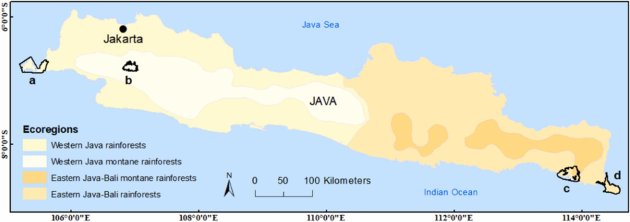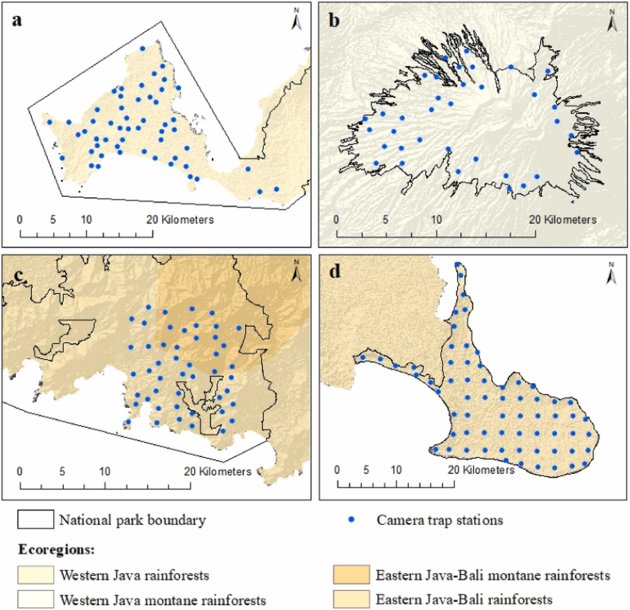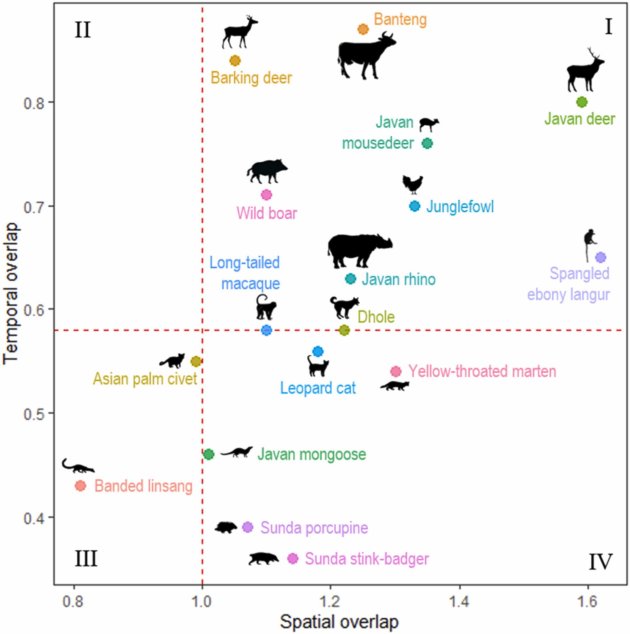Natural Resources Management
How a geo-information app helps vegetable farmers to optimise inputs and boost productivity
6 min
All over the world, large carnivores face diminishing prey populations. This is a serious concern, especially in the case of apex predators. Given their position at the top of the food chain, they are crucial in maintaining ecological balance and biodiversity. The threat of prey depletion inspired researchers to investigate and identify potential prey species for the Javan leopard.
The Javan leopard (Panthera pardus melas) is the last remaining big cat species and apex predator on the Indonesian island of Java. An adaptable and opportunistic predator, it can survive in a range of environments, typically hunting small to medium-sized mammals.
The availability of abundant and diverse prey is crucial for its long-term survival, allowing it to mark its territories. Additionally, prey abundance makes hunting less energy-intensive, which improves the population's overall fitness and reproductive success.
This is why Javan leopard conservation efforts are focused on maintaining adequate prey populations. Achieving this requires a better understanding of which species serve as prey and which predator-prey interactions are at play.
Previous studies have often employed a combination of field observations and faecal DNA analysis to investigate this. However, as the Javan leopard is a rare and elusive species, this approach tends to be time-consuming and expensive.
That's why the researchers of this study chose camera trapping as an alternative. Camera trapping is a proven, reliable, and cost-effective technique for collecting data on wildlife species. It also enables researchers to minimise disturbances in the species' behaviour under study.
In the past, several camera trapping studies have been conducted on the Javan leopard, but only on a local scale or at the individual national park level. This new study aimed to conduct a comprehensive island-wide analysis by utilizing camera trap data from four national parks known to be inhabited by Javan leopards. The researchers set out to:
• compare species richness in areas with and without Javan leopard presence;
• determine whether Javan leopards prefer areas with relatively high species abundance;
• investigate the spatiotemporal overlap in activity patterns between Javan leopards and other animal species, thereby identifying potential prey.
Java is Indonesia's most densely populated island. It has a tropical climate, with annual mean air temperatures between 26.4°C and 29.6°C with an average humidity of 75 %. West Java is more humid than East Java and mountainous regions receive significantly more precipitation.
The researchers identified four national parks, each representing distinct terrestrial ecoregions on the island.

The location of the four national parks used in the study (a, b, c, d). Source: Ariyanto et al. (2024)
A total of 201 infrared camera traps were deployed in the four national parks, active 24 hours a day. The specific locations of these camera traps were primarily selected based on known pathways frequented by animals and proximity to water sources.

The distribution of camera trap stations in the four national parks. Source: Ariyanto et al. (2024)
Over a range of second-half-year periods from 2020 to 2022, camera traps recorded 22 animal species (including the Javan leopard). The researchers analysed 7,461 independent photos over 12,983 camera trap days.
As it turned out, areas where Javan leopards were present had a higher average prey species richness than those without Javan leopards. There was also a positive relationship between the presence of Javan leopards and the abundance of other animal species coexisting in the same location. This leads to the assumption that the Javan leopard plays a vital role in maintaining the structure and function of the ecosystem on Java Island.
In addition, the researchers found that the activities of ten species highly overlapped with those of Javan leopards in space and time, suggesting that these species are potential candidates prey for the Javan leopard.

Spatiotemporal overlap indicating potential prey for the Javan leopard. Source: Ariyanto et al. (2024)
In conclusion, the researchers note that identifying prey species and understanding their richness and abundance enables managers to develop targeted strategies to maintain and enhance these prey populations. Doing so will ensure adequate food resources for Javan leopards and help to make their ecosystems more sustainable.
Furthermore, the evidence from camera traps puts this endangered species in the spotlight, aiding in mobilising public and political support for conservation efforts.
Header picture source: BBKSDA Jawa Barat/SINTAS
This story is an adaptation of a journal article: Ariyanto, A. C., Wang, T., Skidmore, A. K., Wibisono, H. T., Widodo, F. A., Firdaus, A. Y., ... & Murdyatmaka, W. (2024). Range-wide camera traps reveal potential prey species for Javan leopards. Global Ecology and Conservation, e03020. It has been adapted in accordance with the copyright license CC BY 4.0
To read the original article, follow the link below: